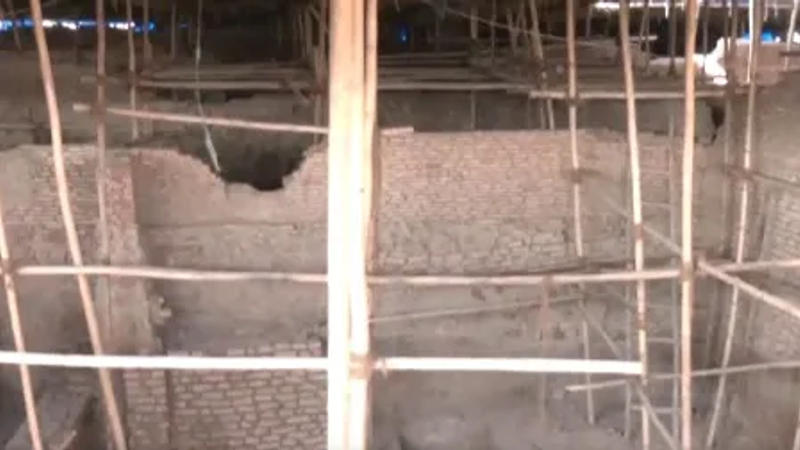Published 23:35 IST, January 16th 2024
Watch: Remains of a 2800-Year-Old Settlement Found in PM Narendra Modi’s Village
The study challenges the conventional narrative of a "Dark Age" following the collapse of the Harappan civilization, indicating a continuous human settlement.

Kharagpur: In a groundbreaking collaborative effort led by the Indian Institute of Technology (IIT Kharagpur), evidence of cultural continuity in Vadnagar, the native village of Prime Minister Narendra Modi, has been unearthed.
The study challenges the conventional narrative of a "Dark Age" following the collapse of the Harappan civilization, indicating a continuous human settlement dating back to 800 BCE.
Watch the Remains of a 2800-Year-Old Settlement
Study Conducted by ASI
Published in the Elsevier journal Quaternary Science Reviews, the study titled "Climate, Human Settlement, and Migration in South Asia from Early Historic to Medieval Period: Evidence from New Archaeological Excavation at Vadnagar, Western India," was conducted by the Archaeological Survey of India (ASI) and supported by various scientific institutions.
The research, funded by the Directorate of Archaeology and Museums (Government of Gujarat) for India's first experiential digital museum in Vadnagar, revealed a multicultural and multireligious settlement.
7 Cultural Stages Discovered
Seven cultural stages, spanning from Mauryan to Gaekwad-British colonial rule, were discovered, underscoring the city's enduring history.
Dr. Abhijit Ambekar, ASI archaeologist and co-author, highlighted the diverse findings, including one of the oldest Buddhist monasteries and artifacts like potteries, copper, gold, silver, intricately designed bangles, and coin moulds from the Indo-Greek rule.
Study Challenges Traditional Depiction of a Dark Age
The study challenges the traditional depiction of a Dark Age, suggesting cultural continuity in India for the last 5500 years.
Prof. Anindya Sarkar of IIT Kharagpur, the lead author, emphasized recent radiocarbon dates indicating a settlement as old as 1400 BCE, challenging the perception of a Dark Age as a myth
The timeframe traditionally referred to as the 'Dark Age' has been between the collapse of the Indus Valley Civilization and the emergence of the Iron Age.
Researchers, including Ravi Bhushan and Navin Juyal from the Physical Research Laboratory, conducted meticulous dating, indicating Vadnagar's successive rule under various dynasties.
Bhushan remarked, "The modern city of Vadnagar lies on the mound below which pages of history are buried," highlighting the significance of the excavation in unveiling the rich and continuous cultural heritage of the region.
Updated 23:35 IST, January 16th 2024




